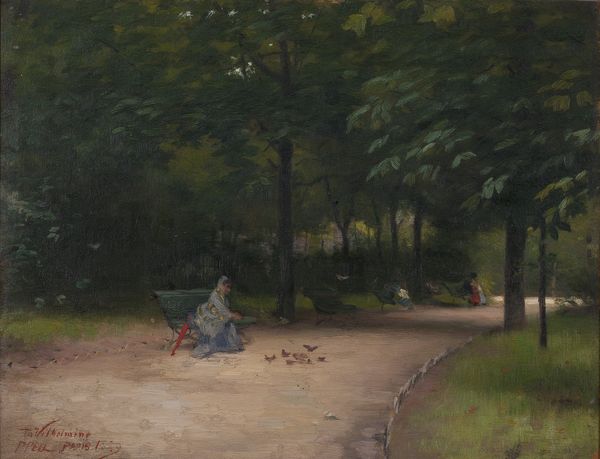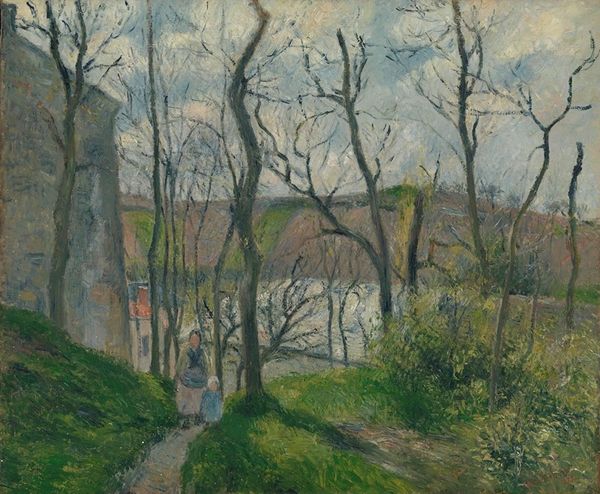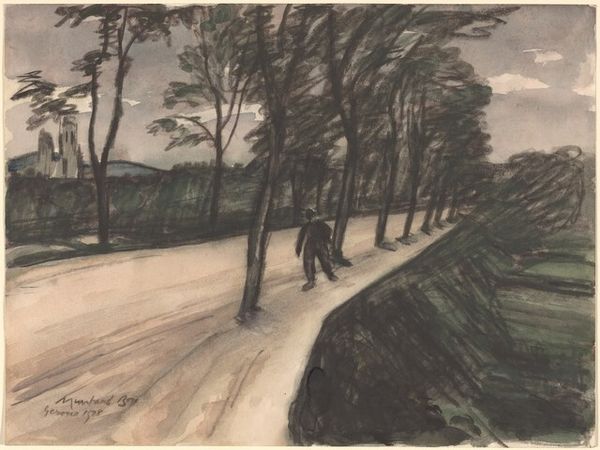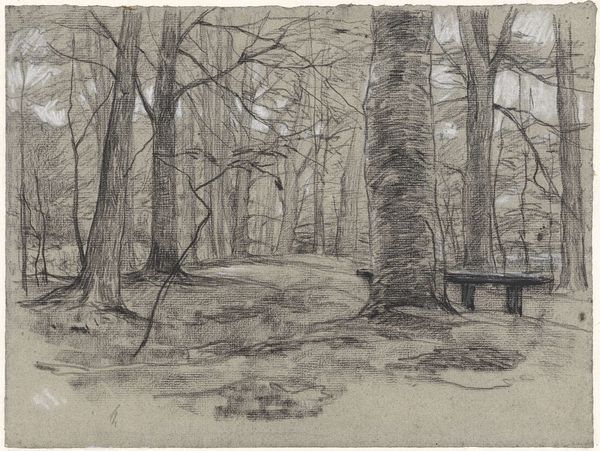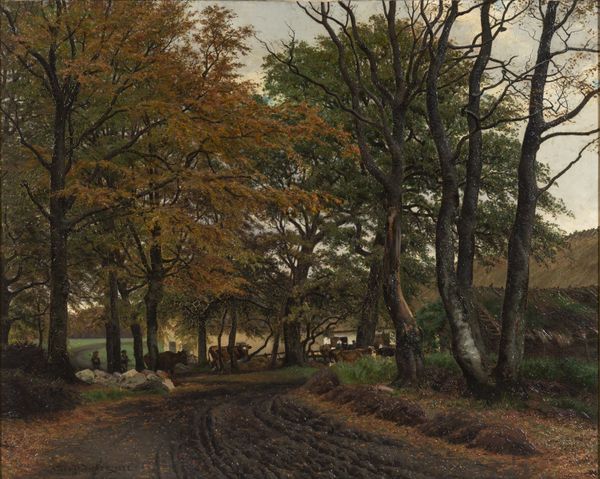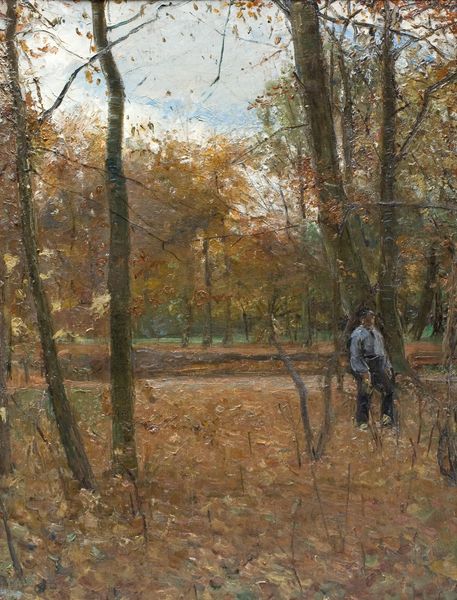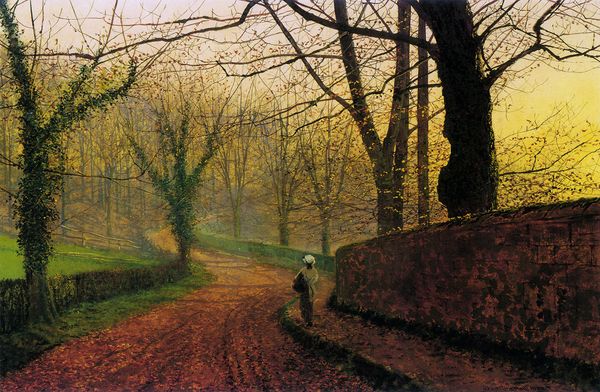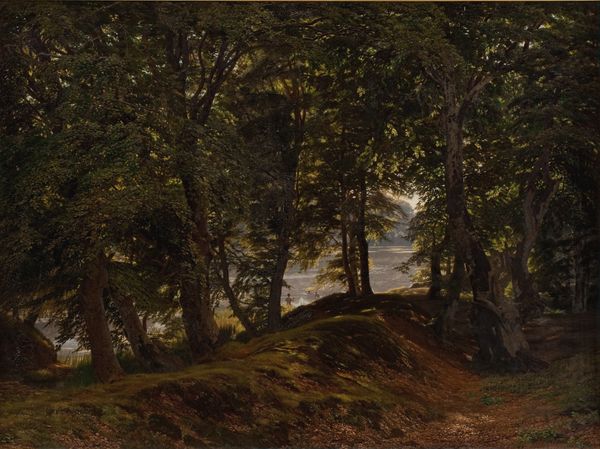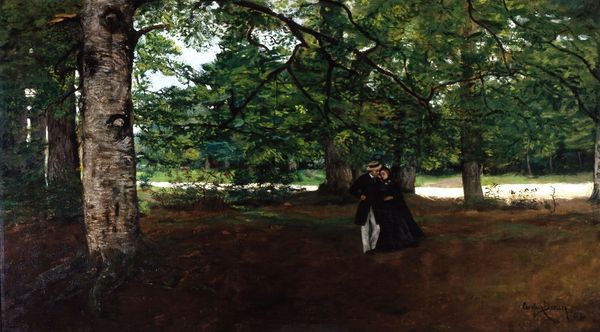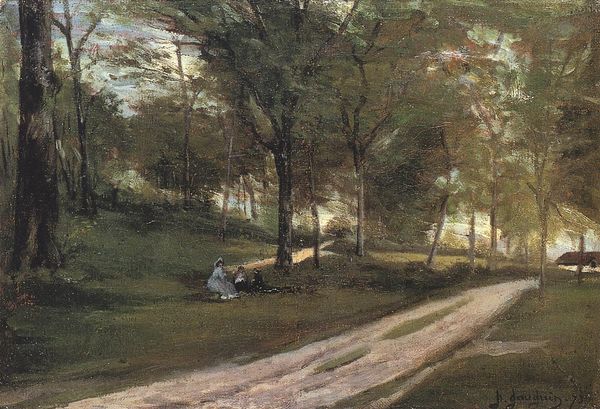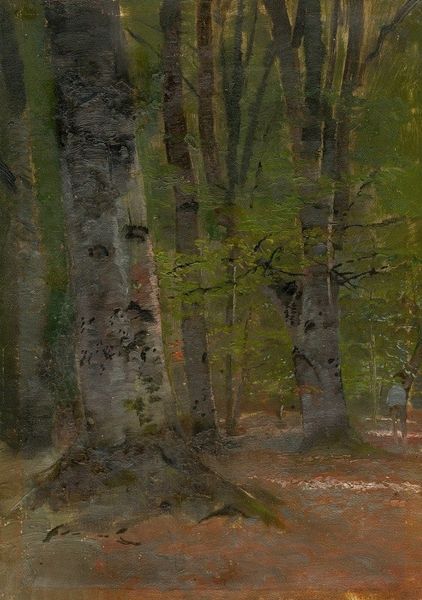
Copyright: Public domain
Editor: Here we have Eugène Jansson’s “Blåsippor,” or “Hepatica” created in 1891. The painting, rendered in oil paint, presents a wooded landscape with two figures. It feels very somber, almost like a stage set. What strikes you about it? Curator: The initial impression is certainly one of melancholic observation. Beyond the immediate depiction, I see layers of coded symbolism. Notice the season; the bare trees suggesting a dormant phase, a period of introspection perhaps. Editor: Yes, the stark trees are very evocative! Curator: And consider the figures. What does their presence suggest to you, beyond simply existing in the landscape? Their gestures... the hunched posture of the one gathering, the more upright stance of the other... do these actions point to something deeper? Editor: I see what you mean! Maybe one is actively engaged with nature, collecting or tending, while the other is more of a passive observer, removed and contemplative. Curator: Exactly. Their relationship to the natural world becomes a mirrored reflection of inner states. Look also at the colour palette: muted tones punctuated by that ethereal blue in the distance. The blue becomes almost like a spiritual beckoning, hinting at transcendence. The title suggests these early spring flowers – could they be representative of hope or resilience? Editor: So, what appeared at first to be a straightforward landscape contains all these embedded meanings? Curator: Precisely! It reveals the emotional and psychological undercurrents running through our shared human experience. Jansson uses familiar motifs to evoke enduring feelings. Editor: I never would have noticed all that on my own. I appreciate you showing me a richer understanding of this artwork. Curator: And I’m reminded how powerful symbols embedded in art, help keep shared stories and cultural memories alive.
Comments
No comments
Be the first to comment and join the conversation on the ultimate creative platform.

